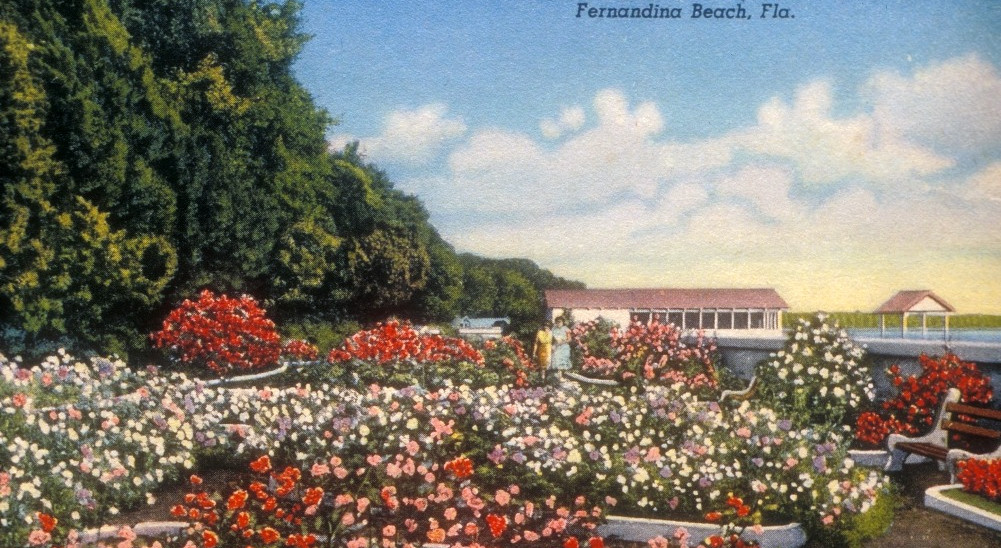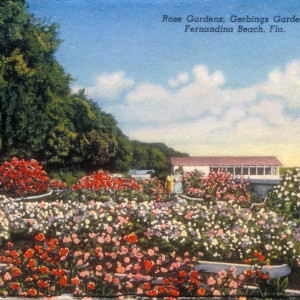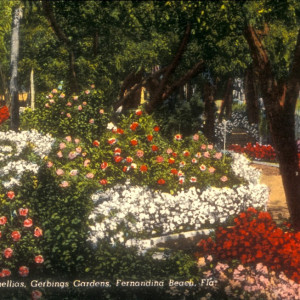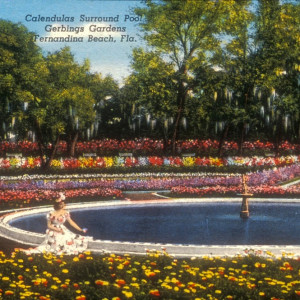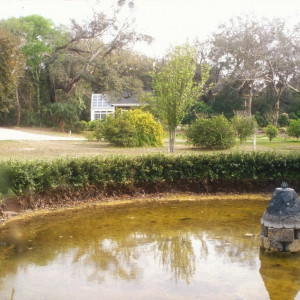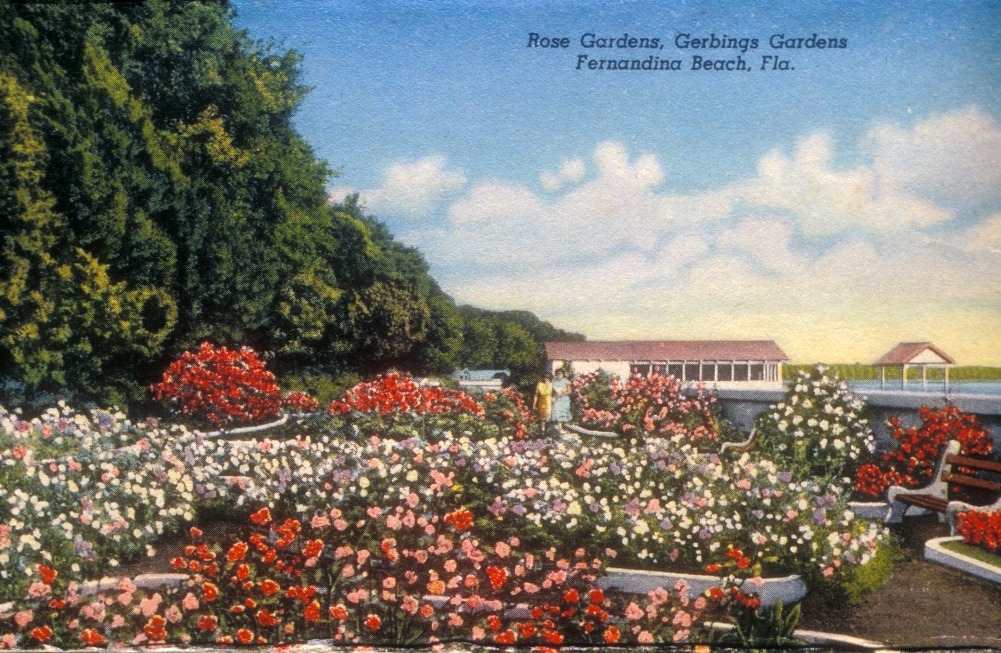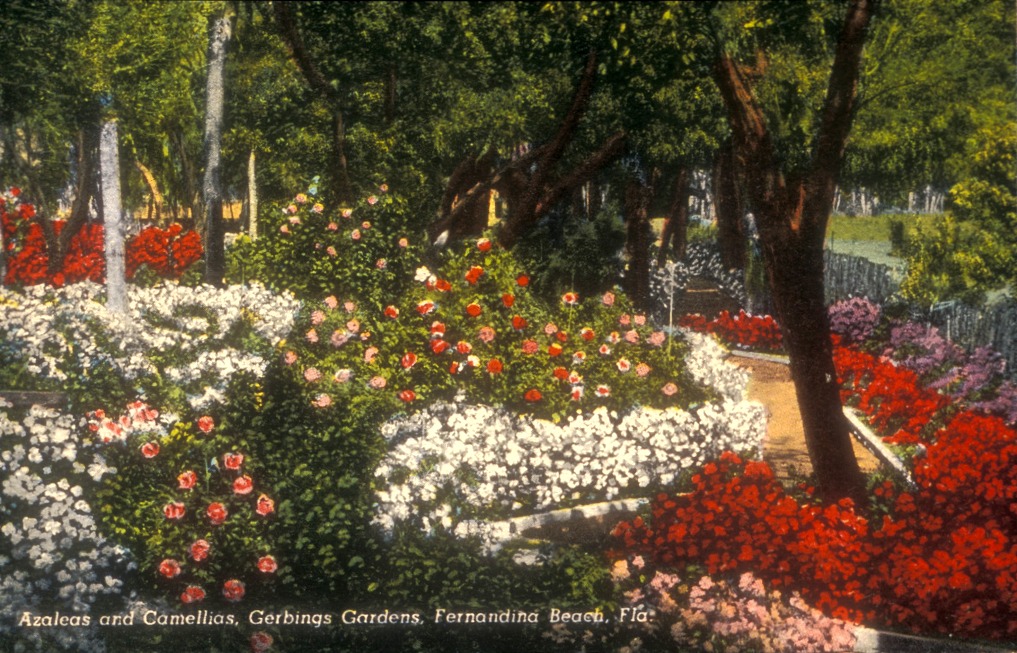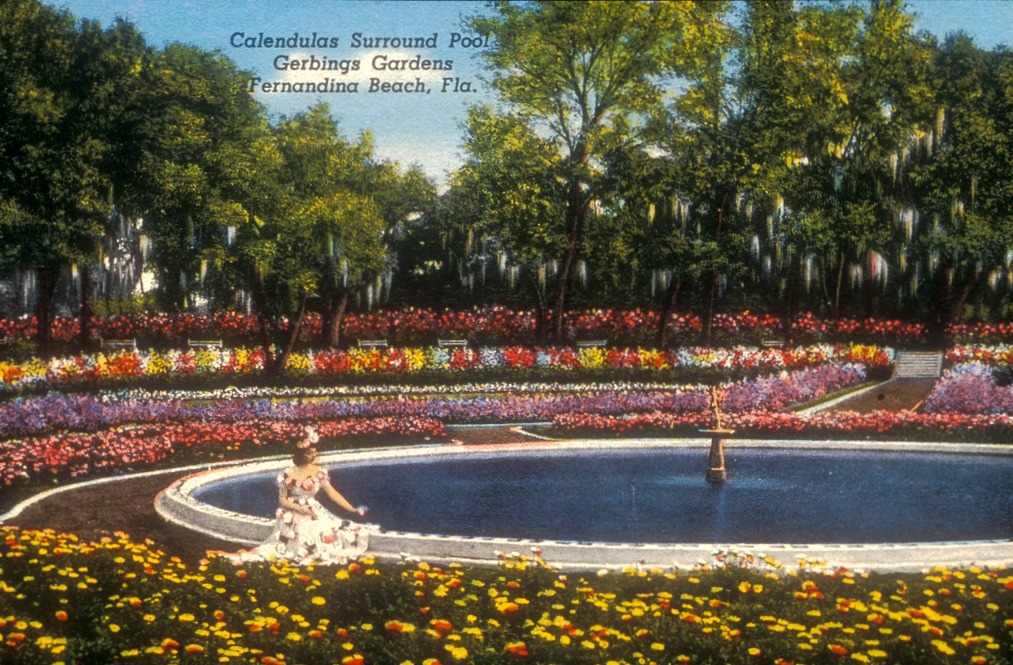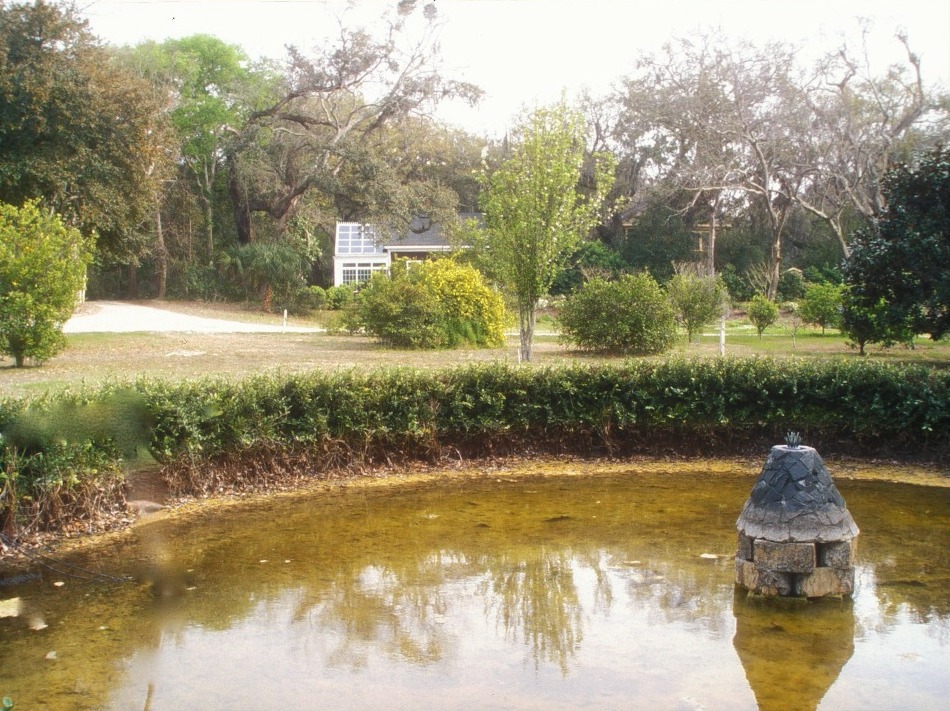Gerbing Gardens
In 1937 Gustav George Gerbing transformed about seven acres of family property along the Amelia River into a public garden, Gerbing’s Azalea Gardens, with plans for massive plantings of azaleas and camellias for viewing and for sale. The entire fifteen-acre holding became Gerbing Gardens, with groves of native trees including cedars, magnolias, bay, pines, live oaks and water oaks draped with Spanish moss, and wisteria trees. The advertisements for the garden claimed plantings of 100,000 azaleas, an 800-foot long camellia japonica ‘Sarah Frost’ windbreak, a natural terraced amphitheater of camellias and trees, rose gardens, a four-acre sunken garden planted in roses, azaleas, camellias and bulbs , picnic grounds and children’s playgrounds, all behind a 1,200-foot concrete sea wall. Concrete curbing was used to define garden beds, and chain link fence was covered with Spanish moss and other vines, and broad walkways of sawdust were known as sawdust trails.
The garden remained public for about twenty years and was used for events such as the Festival of Flowers, but was not commercially successful. Gerbing and his business partner Ralph May continued to breed and sell the popular cultivars Azalea indica ‘Mrs. G.G. Gerbing’ and Camellia sasanqua ‘Jean May.’
The current owners removed vines and undergrowth from the original Azalea Gardens, uncovering mature azaleas and camellias. Skeletal traces of concrete curbing, garden beds, parking areas and the extensive irrigation system also have been uncovered. The Gerbing greenhouse was remodeled and is a private building and the sunken garden and rose garden have been developed for home sites.

